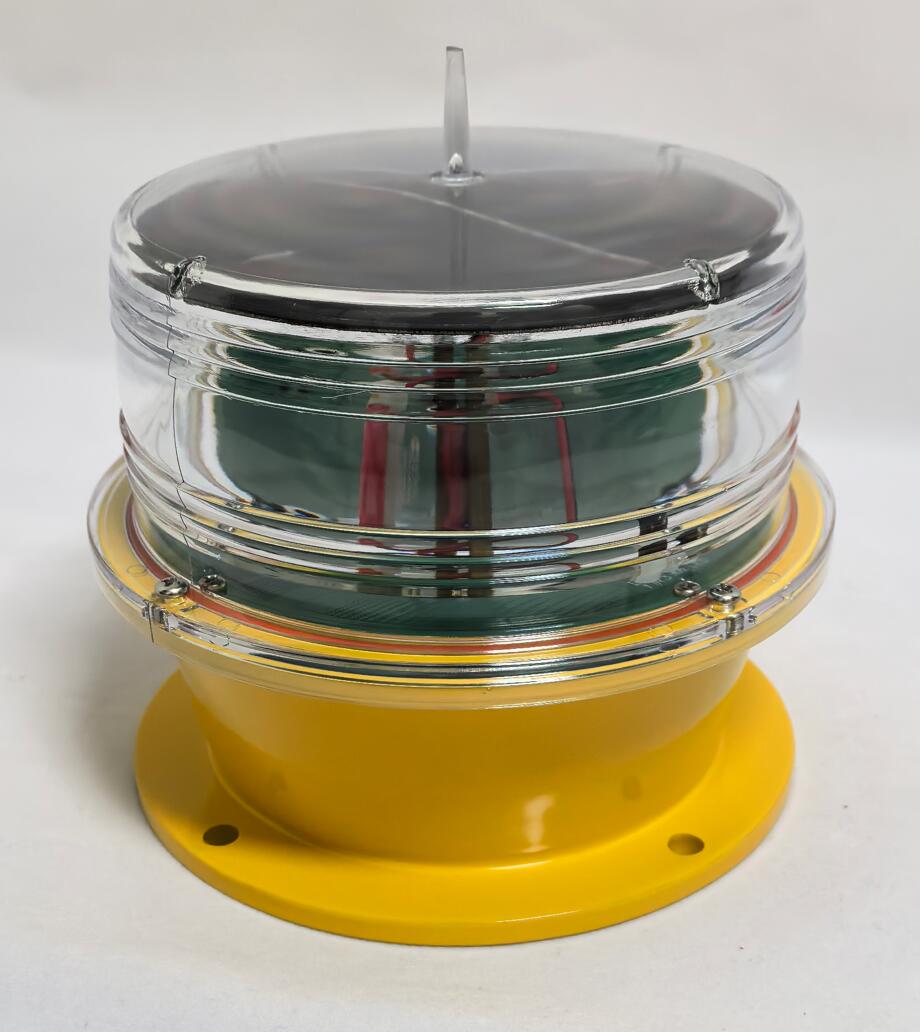Solar Aviation Light: The Future of Eco-Friendly Obstruction Lighting
As the world shifts toward sustainable energy solutions, solar aviation lights are emerging as a game-changer in aerial obstruction marking. These self-sufficient lighting systems combine renewable energy with advanced LED technology to provide reliable, low-maintenance warning lights for towers, wind farms, and urban structures. This article explores how solar aviation lights work, their benefits over traditional systems, and their growing role in modern aviation safety.
The Need for Solar-Powered Solutions in Aviation Lighting
Conventional obstruction lights rely on grid electricity, which poses challenges in remote locations and increases operational costs. Solar aviation lights solve these problems by:
Eliminating dependency on power grids – Ideal for offshore wind turbines, mountain communication towers, and rural infrastructure.

Reducing carbon footprint – Solar energy cuts emissions compared to fossil fuel-powered alternatives.
Lowering long-term costs – Minimal maintenance and no electricity bills make them economically viable.
With air traffic increasing and renewable energy projects expanding, the demand for efficient, off-grid warning systems continues to rise.
How Solar Aviation Lights Work
A typical solar aviation light system consists of:
High-Efficiency Solar Panels – Capture sunlight during the day to charge batteries.
| solar aviation light |
Lithium or Gel Batteries – Store energy for nighttime and cloudy conditions.
LED Light Modules – Consume minimal power while delivering high visibility.
Smart Charge Controller – Regulates power flow to maximize battery life.
Optional Radar Synchronization – Some models integrate with aircraft detection systems to activate only when needed.
| solar aviation lights |
These components work together to ensure 24/7 operation without external power sources.
Key Advantages of Solar Aviation Lights
Compared to traditional obstruction lighting, solar-powered systems offer:
1. Energy Efficiency & Sustainability
Zero ongoing electricity costs.
Reduced environmental impact with clean solar energy.
2. Easy Installation & Low Maintenance
No wiring or trenching required.
Fewer components mean less frequent servicing.
3. Reliability in Remote Areas
Perfect for off-grid locations like deserts, oceans, and mountain ranges.
Built to withstand extreme weather (heat, cold, storms).
4. Compliance with Aviation Regulations
Meet FAA (AC 70/7460-1L) and ICAO (Annex 14) standards.
Available in low-, medium-, and high-intensity models.
Applications of Solar Aviation Lights
These systems are used across multiple industries:
Wind Energy: Marking wind turbine blades to prevent aircraft collisions.
Telecommunications: Lighting cell towers in areas with unreliable power.
Construction: Temporary warning lights for cranes and tall structures.
Maritime: Guiding helicopters near offshore platforms and lighthouses.
Challenges & Future Innovations
While solar aviation lights offer many benefits, some limitations remain:
Battery Performance in Cold Climates – Lithium batteries lose efficiency in extreme cold.
Initial Cost – Higher upfront investment than wired systems (though savings accrue over time).
Dust & Snow Accumulation – Can reduce solar panel efficiency if not maintained.
Emerging Solutions
Hybrid Systems: Combining solar with small wind turbines for consistent charging.
Advanced Battery Tech: Graphene and solid-state batteries for better cold-weather performance.
Self-Cleaning Panels: Hydrophobic coatings to repel dust and snow.
Solar aviation lights represent a sustainable leap forward in obstruction lighting , offering reliability, cost savings, and environmental benefits. As solar technology improves and renewable energy adoption grows, these systems will become the standard for marking aerial hazards—keeping skies safe while supporting a greener future.
